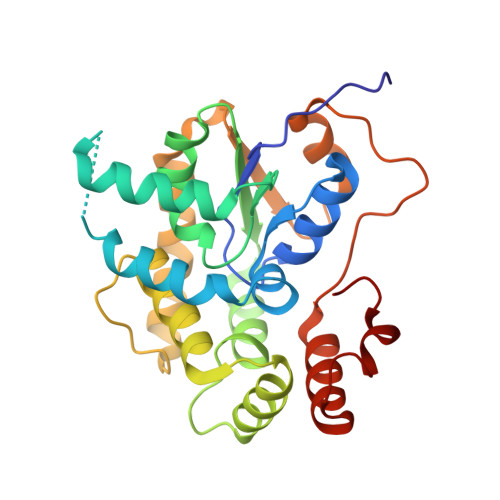Genetic and molecular basis of drug resistance and species-specific drug action in schistosome parasites.
Valentim, C.L., Cioli, D., Chevalier, F.D., Cao, X., Taylor, A.B., Holloway, S.P., Pica-Mattoccia, L., Guidi, A., Basso, A., Tsai, I.J., Berriman, M., Carvalho-Queiroz, C., Almeida, M., Aguilar, H., Frantz, D.E., Hart, P.J., LoVerde, P.T., Anderson, T.J.(2013) Science 342: 1385-1389
- PubMed: 24263136
- DOI: https://doi.org/10.1126/science.1243106
- Primary Citation of Related Structures:
4MUA, 4MUB - PubMed Abstract:
Oxamniquine resistance evolved in the human blood fluke (Schistosoma mansoni) in Brazil in the 1970s. We crossed parental parasites differing ~500-fold in drug response, determined drug sensitivity and marker segregation in clonally derived second-generation progeny, and identified a single quantitative trait locus (logarithm of odds = 31) on chromosome 6. A sulfotransferase was identified as the causative gene by using RNA interference knockdown and biochemical complementation assays, and we subsequently demonstrated independent origins of loss-of-function mutations in field-derived and laboratory-selected resistant parasites. These results demonstrate the utility of linkage mapping in a human helminth parasite, while crystallographic analyses of protein-drug interactions illuminate the mode of drug action and provide a framework for rational design of oxamniquine derivatives that kill both S. mansoni and S. haematobium, the two species responsible for >99% of schistosomiasis cases worldwide.
- Departments of Biochemistry and Pathology, University of Texas Health Science Center, San Antonio, TX 78229, USA.
Organizational Affiliation:


















